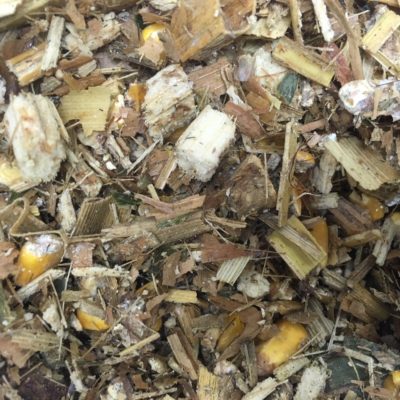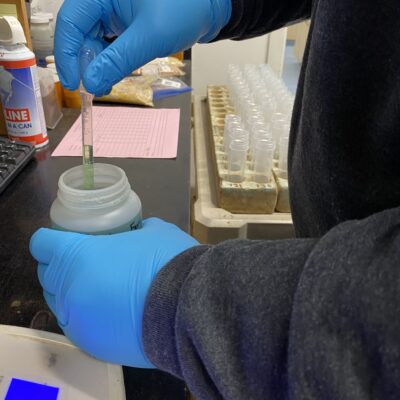The thoroughbred racing season at Fonner Park is quickly approaching. That means feeding race horses for optimal speed. Like other athletes, energy, protein and micro-nutrients are key for optimal performance. Nutritional requirements of horses vary by age, growth stage and training intensity. Maintaining a Body Condition Score of 4-5 throughout development, training and racing is the key to meeting nutritional requirements and optimal speed on the race track. Different rations should be fed at different stages.

Feeding Foals & Weanlings
The objective for young potential race horses is to promote growth and build a strong skeletal structure. During this time calcium, phosphorous, and magnesium are crucial in the formation of bone structure and muscle function. Lots of energy is needed for growth. The ratio of mega-calories in the diet to calcium and phosphorous in the diet should be 1.4 Mcal / lb to 0.7% calcium and 0.5% phosphorous. If the feed has more than 1.4 Mcals / lb, then calcium and phosphorous requirements also increase. It is generally recommended that weanlings receive a diet made up of 70% balanced concentrate, typically a blend of cereal grains, mineral and vitamin supplements, and 30% grass hay.
Feeding Yearlings
It is generally recommended that yearlings consume a diet made up of 60% of a balanced concentrate and 40% grass hay. To meet the needs of the growing foal, it is recommended that the balanced concentrate contain no more than 1.4 Mcal / lb Digestible Energy and a minimum concentration of the following nutrients:
- 14.0% Crude Protein
- 0.6% Calcium
- 0.4% Phosphorous
- 7.0% Crude Fiber
Horses in Training & Racing
Energy
Race horses need twice as much energy as their sedentary counterparts. Every horse will consume 2.0-3.0% of their total body weight. Getting enough energy into the total diet for a race horse training at high intensity can be a challenge. Cereal grain mixes high in soluble carbohydrates should be fed. High levels of soluble starch and sugars are important for the energy to be absorbed in the small intestine and stored as glycogen in the muscles for rapid utilization during exercise.
Feeding race horses fat in the balanced concentrate or as a top dressing is another way to ensure a high energy diet. Fat contains 2.5 times more energy per gram than carbohydrates. Fat should be supplemented to race horses experiencing Rhabdomyolysis, also known as Tying Up. Using fat in the diet to replace high levels of carbohydrates can also help prevent hind gut acidosis. Increasing fat decreases the amount of starch needed to meet energy requirements. Formulations with less carbohydrates passing to the cecum for fermentation reduces acidosis risk. Too much fat in the diet can interfere with fiber digestion and lower dry matter intake. Therefore limit fat to 10% of the total diet.
Protein
Protein requirements of racing horses are just barley above a horse at maintenance. It is suggested to select a hay source containing approximately 8.0% crude protein to be fed with a balanced concentrate containing approximately 12.0% crude protein. When balancing protein, more isn’t always better, excess protein, minerals and vitamins result in metabolic stress and decreased performance.
Minerals
Mineral supplementation while training or racing is the final consideration when feeding race horses. In addition to the elevated bone building minerals, electrolyte replenishment is also important. Sodium, chloride and potassium are lost through sweat in an active race horse. Horses cannot meet increased requirements through a free choice mineral. Therefore, mineral supplements should be mixed in the concentrate feed. Most commercially available balanced concentrates will include balanced mineral supplementation.
The most important thing to remember when feeding active animal athletes is to feed to maintain body condition score. Formulate adequate diets and adjust energy supplementation to match activity levels. If it is a rest day, give less concentrate. If the horse raced or trained hard, give more concentrate. Match mega-calories burned to mega-calories consumed to maintain a body condition score between 4 and 5. If you are questioning nutrient contents of any feed, send a sample to Ward Laboratories, INC. for a laboratory analysis.




